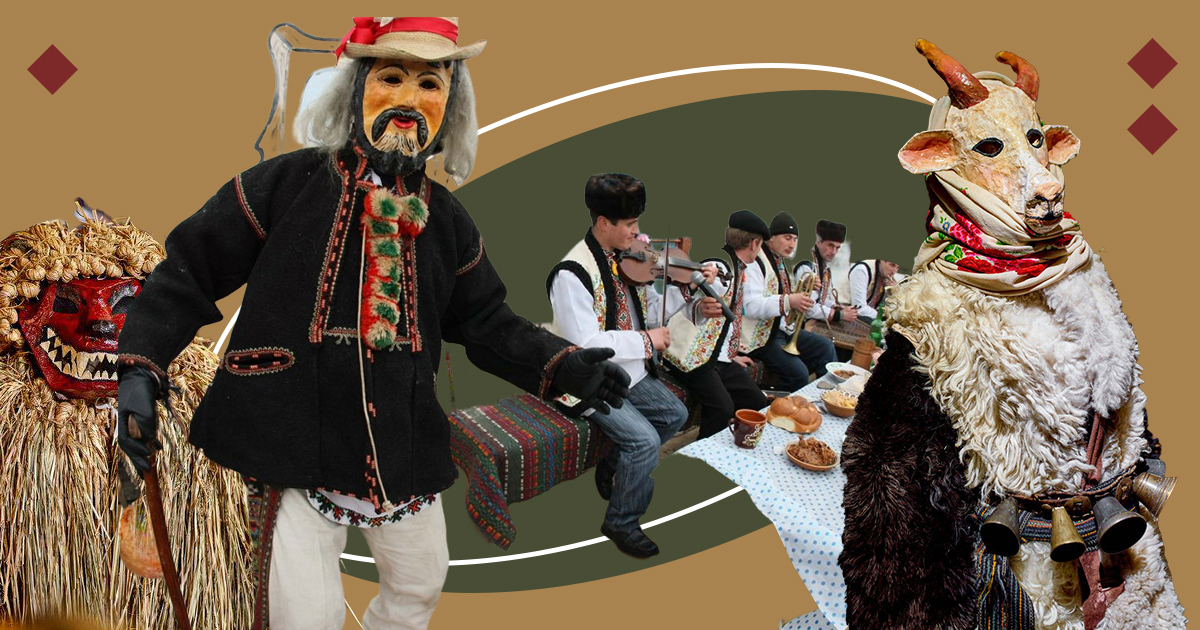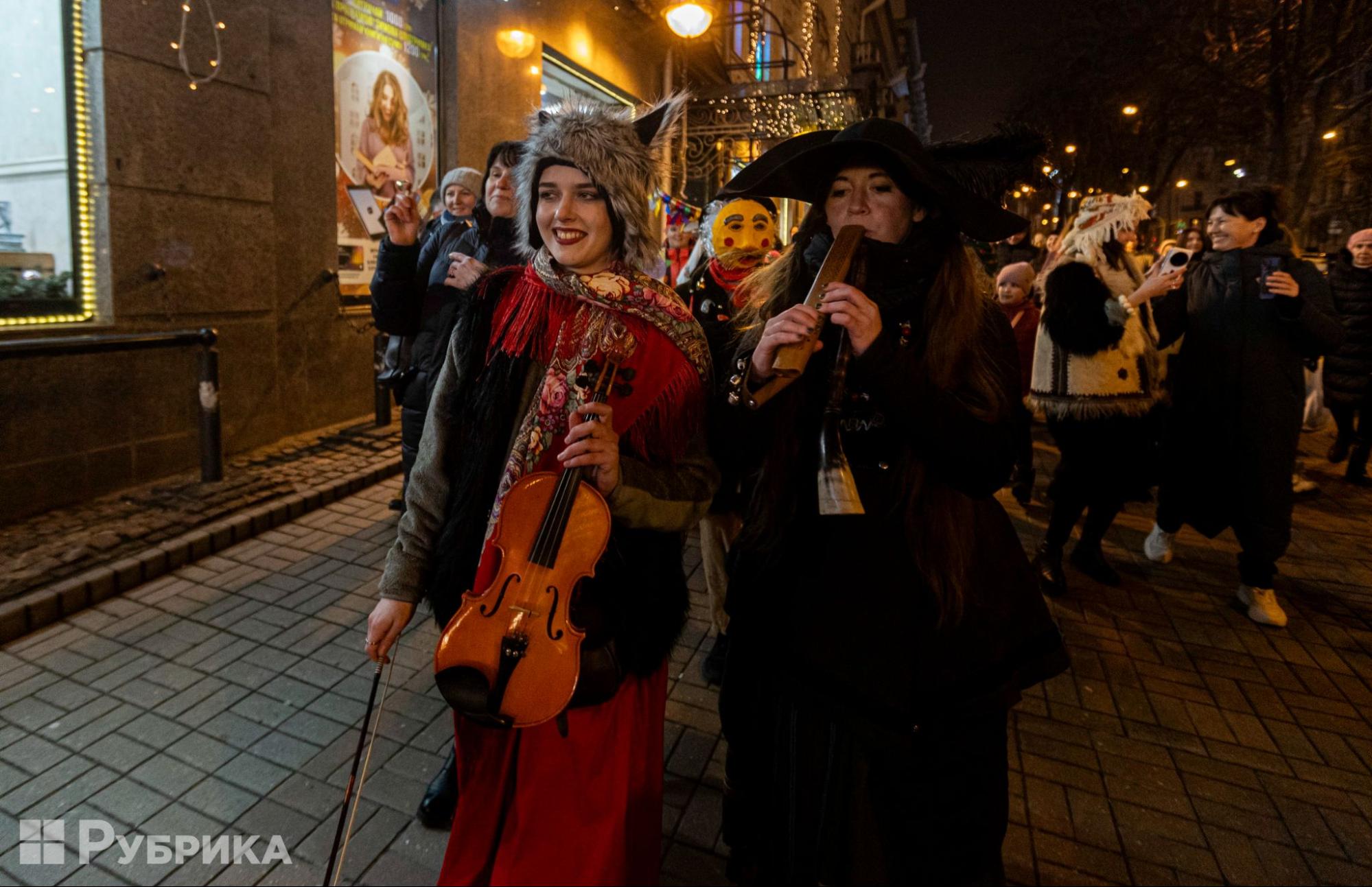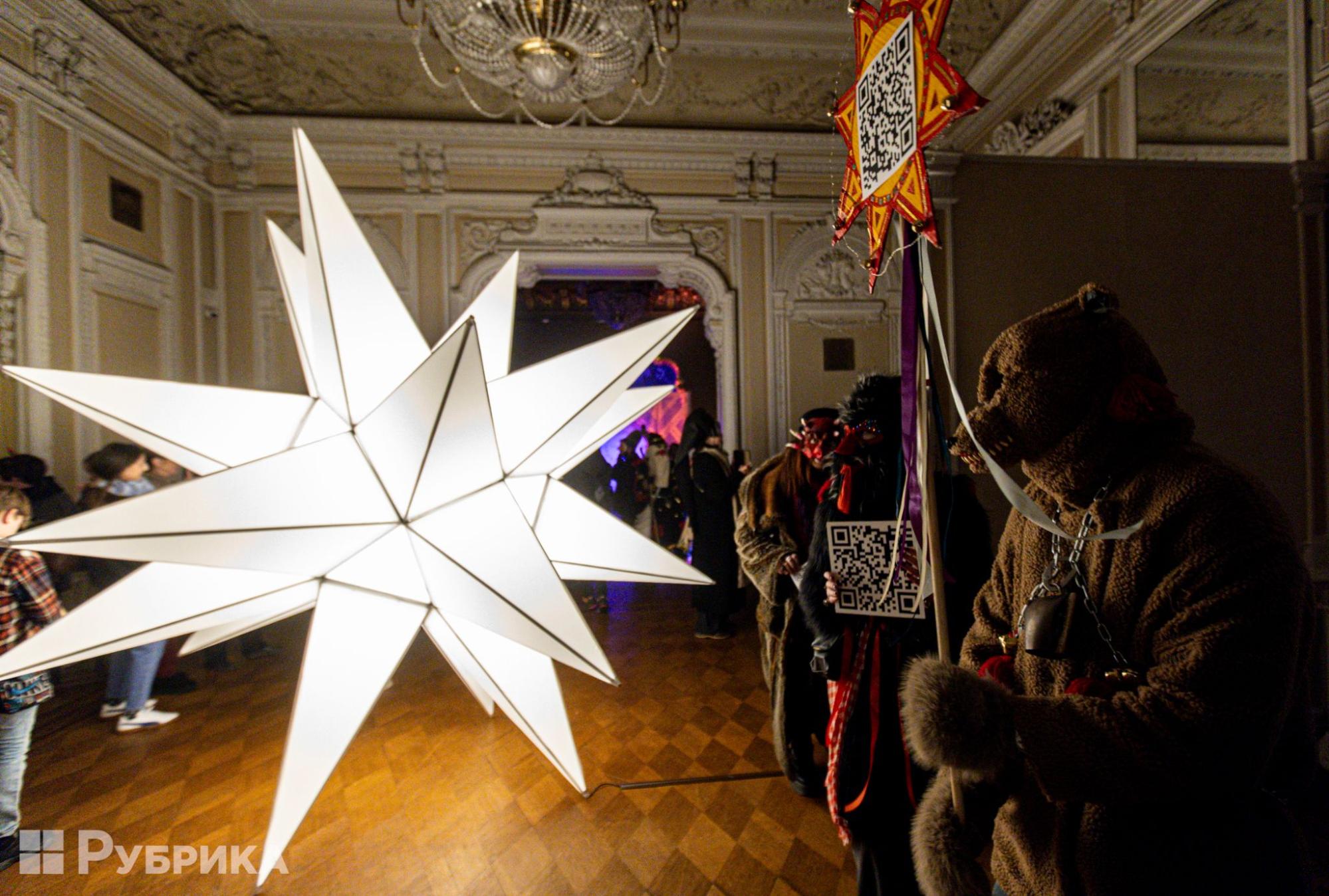The Ukrainian people's ancestors perceived the winter traditions, now recognized as celebrations, with a deeper purpose: to appease the spirits and ensure blessings for a prosperous new year. Rubryka explores Malanka, a Ukrainian New Year's Eve festival that is not only festive but also symbolic, intended to program the year for Ukrainians toward well-being. Researcher Aliona Dienha explains how Malanka is being revived in Ukrainian cities and where you can join in the celebrations.


On New Year's Eve, Malanka comes to life in the streets of Ukrainian villages and towns. Groups of people dressed in masks, sheepskin coats, and colorful costumes move from house to house, accompanied by music and the jingling of bells. They play pranks, spread joy, announce the arrival of the new year, and scare away evil spirits with their lively costumes. In Ukrainian folklore, Malanka became synonymous with New Year celebrations.


Malanka in Kyiv's streets
While Malanka once warded off evil spirits for Ukrainian ancestors, Soviet Ukraine saw "evil spirits" of a different kind: totalitarian authorities who banned this tradition altogether. Soviet law enforcement detained participants, prohibited the celebrations, and distorted the tradition.


"One comment under our video about Malanka read, 'The Soviet Union must have brainwashed me so much that I see this as nothing more than some rustic songs and costumes.' No matter how it sounds, we must remember how the Soviets depicted our traditions. They banned and destroyed them, especially in cities. That's why many still think caroling and Malanka are purely rural traditions. The Soviets erased these customs, turning them into stereotypes of 'peasant antics,'" Aliona Dienha reflects.
Russia continues to erase Ukraine's traditions, wiping entire villages and towns off the map. Those who have carried their community's genetic code for generations are displaced and forced to assimilate into other cultures because of the Russian invasion. During the war, some villages stopped celebrating, feeling it was inappropriate or "not the right time." As a result, traditions are fading into the background.
Yet these customs are cultural identifiers for Ukraine, reflecting its values, history, and social bonds.
"IKEA gnomes, Santa Claus, and Merry Christmas are not our cultural traditions," says Aliona.
The researcher believes public interest in traditional celebrations can be reignited, making them tourist attractions and preserving them despite globalization.
Together with the Kyivska Malanka musical group, Aliona has organized the festival in the Ukrainian capital for the second year in a row to raise funds for the HURKIT charity foundation, which supports the Ukrainian military. Last year, the traditional New Year characters of Malanka, Vasyl, the Goat, the Grandfather, the Devil, and others managed to raise almost UAH 300,000 for a pickup truck. This year, they are fundraising for mobile command points for drone operations — essential tools helping Ukraine's Defense Intelligence strike targets in Russia. You can support their efforts here.
The Malanka participants parade through Kyiv's streets, visiting bars, bookstores, museums, and roadsides. They sing, perform plays, and unite communities through shared celebrations.
In 2016, Aliona decided to experience Malanka in its full glory in the village of Vashkivtsi, Chernivtsi region, where the tradition has been celebrated on a grand scale for years.
Kyivska Malanka
"The tradition attracted me with its vibrancy, carnival-like atmosphere, and uniqueness," says Aliona Dienha. "Its depth, fascinating characters, and connection to pre-Christian rituals and our ancestors — it's a special energy and bond of people. It pulls spectators into this whirlwind. It's clear why the tradition is still alive: people genuinely enjoy it."
Aliona and her friend planned to stay in nearby Chernivtsi and return by taxi after the festivities. They shared their plans with fellow travelers, who laughed and suggested they spend the night with them instead. The girls soon understood why — once Malanka began, taxi drivers stopped answering their phones.
"Malanka takes over the whole village, stopping cars. Everyone is reveling; moonshine flows like a river. You simply can't say no to Malanka — not even with excuses like 'I don't drink' or 'I'm on antibiotics.' This goes on until dawn. We went from house to house with the bears, celebrating. We were Malanka's hostages," Aliona laughs. They finally managed to leave the village only at sunrise.
On New Year's Day, people celebrate Vasyl's Day, a significant religious holiday. Everyone attends church, and men named Vasyl celebrate their name day — a tradition that continues unabated. As the saying goes, "In our village, everyone's a Vasyl," so the festivities keep going.
Aliona's favorite Malanka memory took place in the village of Krasnoiilsk, Chernivtsi region. Just 10 kilometers from the Romanian border, the town is home to ethnic Romanians, so Malanka songs are sung almost entirely in Romanian. This is one of the largest Malanka festivals that took place in Ukraine before the full-scale invasion. Thousands of people gather in the streets, and hundreds of Malanka characters fill the scene.
Aliona and her friends stood on the sidelines, watching the festivities. Suddenly, a truck appeared, carrying an improvised cage with the word "police" painted on it. In a flash, the Malanka troupe grabbed Aliona and her friends and threw them into the cage.
"They were catching spectators. They drove us around until we paid a ransom. At one point, a band tried to bargain for us — they offered to play a song in exchange for our release. They started playing for Malanka, but she refused, so we had to scrape together some cash. They didn't let us go until we paid," Aliona recalls.
The last time Aliona experienced the Malanka festival in a rural setting was back in 2022, before the full-scale war. She visited the village of Kosmach in the Ivano-Frankivsk region. Determined to keep the tradition alive, the researcher decided not to let the celebration fade away. Instead, she created her own version of Malanka in Kyiv, incorporating fundraising for the Ukrainian Armed Forces.
"Our Kyiv Malanka is, of course, different from the one in villages. The traditional celebrations were centered around the local community, a specific group of people. In the city, it's more of a simplified version or even a remnant of that tradition," Aliona explains. "In urban settings, it has become a carnival, more about spectacle than substance."
She believes urbanization disrupts the sense of community essential for Malanka to thrive.
Traditionally, Malanka had a purpose. Initially, it was a form of agrarian magic to appease the gods for bountiful harvests, livestock, and prosperity. Later, it evolved into a matchmaking ritual, with playful courtship woven into the celebration.
In cities, however, the custom of visiting homes, an essential part of Malanka, has disappeared. In villages, it's customary for Malanka performers to be treated not just with money but with food and hospitality. For example, homeowners might offer a festive loaf of bread, freshly baked for the occasion.
"In the city, we mostly go to venues rather than houses, so this part of the tradition is fading, leaving only the carnival-like, entertaining aspects," Aliona says. "People donate money to Malanka performers instead. We also try to emulate traditional mischief-making, which is a key element of the celebration."
Mischief and playful pranks are hallmarks of Malanka. In some villages, performers might overturn items in a house or take objects outside. They've even been known to put a goat on a roof or remove doors or gates from their hinges. These antics weren't meant maliciously but simply to bring laughter and joy.
"For some families, Malanka has been a tradition for generations. But for us city folk, we come in like magpies, taking bits and pieces of what we like," Aliona reflects. "The deeper meaning our ancestors instilled in these celebrations doesn't hold much weight for us now. Back then, people believed in the afterlife and thought their rituals could influence the weather, nature, and the favor of the gods. Today, we're just playing along."
At her Kyiv Malanka, the team begins with a brief introduction explaining the tradition so that the audience understands what's happening. They rehearse and write a script beforehand, though much of the event is built on improvisation.
"We're not a 'professional Malanka troupe,' but we're doing it," Aliona says. "You just have to start somewhere. Don't wait for Malanka to come to your town or village — just make it happen yourself."
Malanka and the ritual of "Leading the Goat" were once celebrated across all of Ukraine, not just in its western part. "Malanka was practiced in the eastern regions, the south, and even around Kyiv," Aliona explains.
However, constant bans caused the tradition to fade. While older generations might still remember the festivities, younger people in some regions are unfamiliar with them.
As Ukrainian society evolves, so does Malanka. Certain rituals have lost the original meanings they held for previous generations. Even in villages, some people dismiss the tradition, calling it "pagan nonsense."
"Many people participate in Malanka without understanding what it means. They do it because their grandfather did, who passed it down to their father, and so on. Even spectators interpret certain actions superficially," Aliona notes.
The researcher continues, "Take the sexual undertones in Malanka, for instance. Scholars argue that this isn't just modern men acting silly. Such behaviors were normalized in ancient times, reflecting a connection between sexuality and fertility. This explains why some rituals include symbolic movements or bells tied to the hips, representing genitals."
Aliona emphasizes that even the pranks, such as smearing faces with soot, have deeper meanings. Soot was sacred to Ukrainian ancestors, symbolizing protection and transformation.
Despite these complexities, Malanka is fundamentally about people. It's a tradition that unites communities, fostering a sense of belonging.
"When performers visit your home, entertain you, and act out little skits, everyone enjoys it. It creates interaction. And that's the most amazing part," Aliona says.
Ініціатива “Рудименти Львова” взялася за реставрацію більш ніж 50-річної вивіски магазину “Електротовари”. Завдяки відкритій комунікації… Читати більше
В Україні ухвалили закон, який дозволяє створювати спецшколи для дітей з психічними порушеннями та розладами… Читати більше
“Рубрика” поговорила з Олександром Тараном, головою Svitanok.NYC — української громадської організації, заснованої в Нью-Йорку після… Читати більше
“Рубрика” розповідає про проєкт наставництва дітей з інтернатів від БФ “Твоя опора”. Якщо ви хочете… Читати більше
3 квітня в Києві презентували результати 5-річної програми “ReACT4UA/EU4Business: Застосування та імплементація Угоди про асоціацію… Читати більше
Learn the story of Cabaret in Ukraine and its home theater. Visit the world of… Читати більше
Цей сайт використовує Cookies.